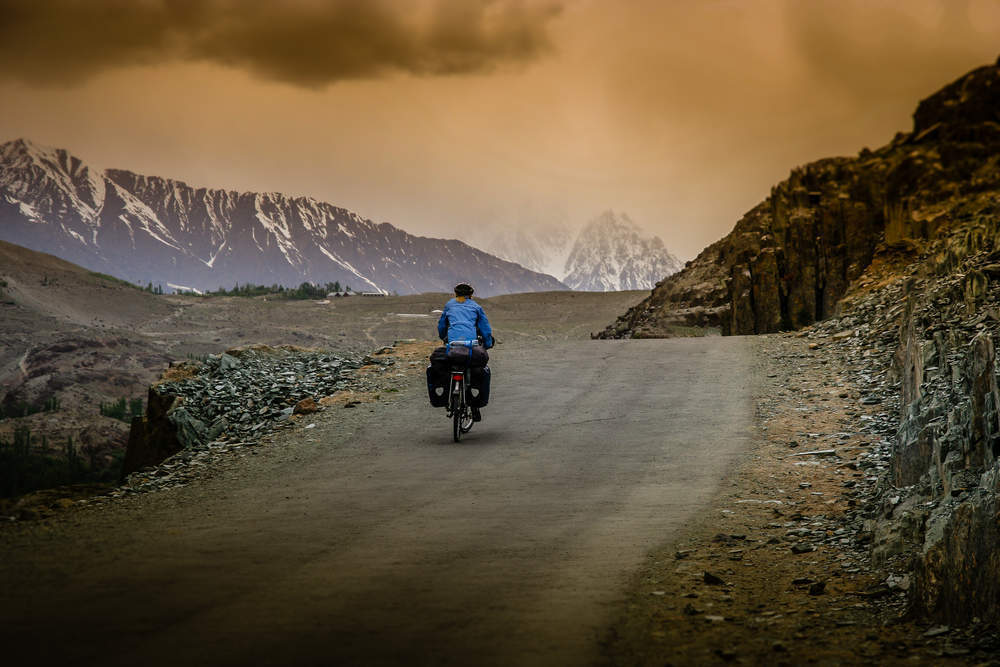
Transformative travel through mountain climbing and trekking is very popular around the world and especially in the US, Germany, France, and Switzerland.
The Alps, as well as mountains in the US, have traditionally been among the favourite destinations for mountain climbers.
While Europe is home to some of the most climbed peaks in the world, attempting to climb the wilder mountains of Asia such as Everest and K2 is a great dream for many mountaineers: one that also presents opportunities for the development of the tourist industry in Asia’s mountainous regions.
However, as travellers – especially younger ones – are seeking more from their holidays, wilder winter destinations in Asia such as India and Pakistan are expected to become increasingly popular.
Whereas Nepal is a popular destination for experienced mountaineers – it is often considered a dream land for many – Pakistan is rarely found on the bucket list of travellers, especially due to security concerns.
However, the authentic and unexplored culture, as well as the majestic mountains found in the country (Pakistan is home to five of the fourteen highest peaks in the world) is luring younger mountaineers who are looking for personal fulfilment through unique, adventurous activities.
How well do you really know your competitors?
Access the most comprehensive Company Profiles on the market, powered by GlobalData. Save hours of research. Gain competitive edge.

Thank you!
Your download email will arrive shortly
Not ready to buy yet? Download a free sample
We are confident about the unique quality of our Company Profiles. However, we want you to make the most beneficial decision for your business, so we offer a free sample that you can download by submitting the below form
By GlobalDataThe British Backpacker Society, an online project for adventure travellers, also chose Pakistan as the top travel destination for 2017, characterising it as “one of the friendliest countries on earth” – contrary to popular belief – and stressing its untapped tourism potential.
Transformative travel — taking a trip to improve or change your life — has been growing rapidly in 2017.
Awareness of the negative impact of human activities on the environment, appreciation of different cultures, and prioritising experience has resulted in travellers seeking deeper travel experiences, according to a recent GlobalData survey.
Such travellers are interested in adventure activities and sports in nature, as well as in discovering highly unexplored cultures.
This combined with the trend of transformative travel are driving lucrative opportunities for tourism in mountainous regions of Asia such as Nepal, India, and Pakistan.
For instance Nepal, currently in the news for prohibiting foreign solo climbers from attempting to scale mountains in the country without being chaperoned, has already benefited greatly from alpine tourism – though there is still more potential.
The country has taken advantage of its high peaks such as Mount Everest; the issuing of climbing permits generates essential revenue for the country.
Similarly, the current decision that climbers will need to be accompanied by a guide – besides seeking to safeguard the safety of mountaineers – is seen as a way through which tourism income can reach and benefit the local economy and community.
National and local governments must recognise the great potential that lies in the development of mountaineering expeditions and proceed by incentivising local businesses to invest in tourism, as well as organise sports events.
For instance, the government of Jammu and Kashmir in Northern India realised the opportunity that lies in adventure tourism and took advantage of the diverse natural resources and sub-zero temperatures in the region by launching a high adrenaline event of ice climbing, attracting both domestic and foreign visitors.
Besides local governments, tourism businesses and operators must actively introduce packages that combine mountaineering with culinary and cultural tours, as well as more spiritual activities such as meditation.
By introducing such itineraries, also at lower prices – another key driver for those choosing Asia over Europe for mountaineering – Asian countries will be able to compete with more developed alpine resorts in Europe and the US, hence attracting a growing number of tourists looking for deeper fulfilment through their travels.
Europe is undoubtedly the top destination for mountaineers.
However, the expectations of travellers are changing, with more looking for transformative, authentic and adventurous experiences.
Asia – home to the highest mountains in the world, unique nature and unexplored culture – should take advantage of this trend and proceed by developing tourist activities that will generate essential income and employment, ultimately contributing to the prosperity of local economies and societies.




